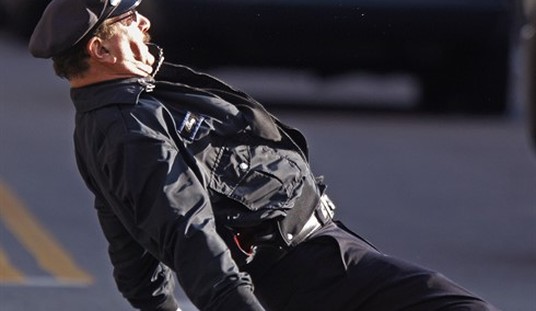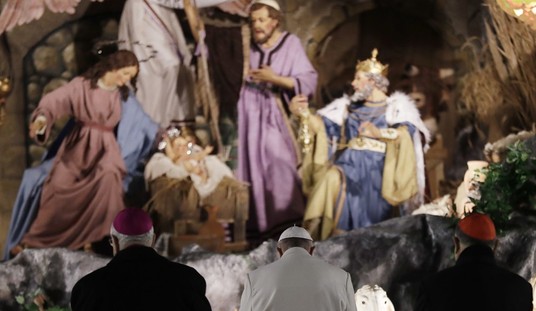The streets of Iran are relatively quiet in the aftermath of the 12-Day War with Israel. This is a result of decades of planning on the part of the regime to create one the most extensive, suffocating, and thorough systems of repression in the world.
Still, the regime has never been weaker than it is now. In the early days of the Islamic Republic, the government could count on massive support from the people, who took to the streets to protect it. It wasn't until the executions started in 1981 that organized opposition began to build.
By then, it was too late. Over the last few decades, the Iranian theocrats have constructed an intricate, layered bureaucracy of oppression that makes opposition to the government a dangerous game.
The Iranian regime has lost most of its "resistance" allies, its missiles that targeted Israel have been destroyed as well as the infrastructure that launched them, its air force has been grounded, and its nuclear program may be beyond repair, with few working centrifuges to spin up uranium into bomb-grade material.
So why isn't the Iranian opposition carrying out any street actions to attempt to overthrow the regime?
Perhaps only Communist China has a more complete system of oppression of its people. But Beijing must keep track of more than 1.4 billion citizens, while Iran only needs to track 90 million. The Iranian secret police and intelligence bureaus have an additional advantage in that the geographic area they oppress is significantly smaller than that of China.
According to the Middle Eastern Forum (MEF), the Iranian government established a provincial guard in 2007 to "better streamline coordination between military and security units in every Iranian province." The concept was simple: Each Iranian province should have the means to protect itself in the event of an Iraq-like revolution breaking out and provincial commanders getting out of touch with Tehran.
"These provincial guards function like military chiefs for their respective provinces, overseeing all IRGC and Basij offices and bases throughout the area," says the MEF. Each provincial guard commands an infantry and security unit.
This kind of layering has proven to be incredibly effective at minimizing protests. During the 2022 anti-hijab protests, the provincial guards acted quickly and brutally, descending on demonstrations and breaking them up before they got any momentum.
Any "revolution" in Iran will have to await a far more incendiary moment. For the present, the "moment" for a street rebellion has passed.
Meanwhile, the military and civilian leadership are largely in hiding. Thanks to the remarkable penetration of Iran's military and civilian intelligence agencies by Mossad, Tehran's rulers and planners are in hiding, fearful that the next bomb dropped will have their name on it.
This includes the all-powerful, almighty Ayatollah Ali Khamenei, who has been seen in public exactly one time since the conflict with Israel began. The furtive appearance, a remembrance of the 7th century martyrdom of the Prophet Muhammad’s grandson, Hussein, didn't last long, and Khamenei scurried back into his hiding place afterwards.
Khamenei's absence resulted in an outpouring of mockery on social media. An Iranian journalist abroad tweeted, “Ali Khamenei taking refuge in a bunker is neither a sign of wisdom, nor foresight, nor revolutionary courage. This act of seeking shelter means our skies are filled with Ababil birds, we are defenseless, and if Khamenei is lost, the collapse will only accelerate.”
Also for our VIPs: 12 Days That Shook the World
But is Khamenei really cowering in his bunker? Or is there a behind-the-scenes struggle for power?
Netherlands-based Iranian political scientist and pollster Ammar Maleki wrote in a post on X, “These days, most people see Khamenei’s absence as a sign of fear. But another theory may be closer to the truth: that a power struggle has sidelined him from public view—and that this absence may not entirely be his own choice.”
Khamenei may well wish to emerge from hiding and deliver his usual threats and rhetoric in public, but according to Maleki, other senior figures prefer to keep him at a distance—fearing that being near him could make them targets of an Israeli strike.
However, “In the aftermath of the ceasefire, the Islamic regime and its functionaries will sooner or later have to choose between two paths: transformation or collapse. And it is the underground power struggle within the system that will determine whether Khamenei returns to the surface—or is sent to the heavens,” he concludes.
I would think that if there's a struggle for power in the underground bunkers holding the Iranian leaders, Khamenei would want to surface and be seen so that he could tap into his still-powerful base of support: the fanatical Iranian underclass.
It may be a combination of ill-health, fear of an Israeli strike, and the jostling for power that we know is taking place behind the curtain, but whatever the reasons, the 12-Day War has radically unsettled the Iranian regime. When the dust settles, we're likely to see significant changes.










